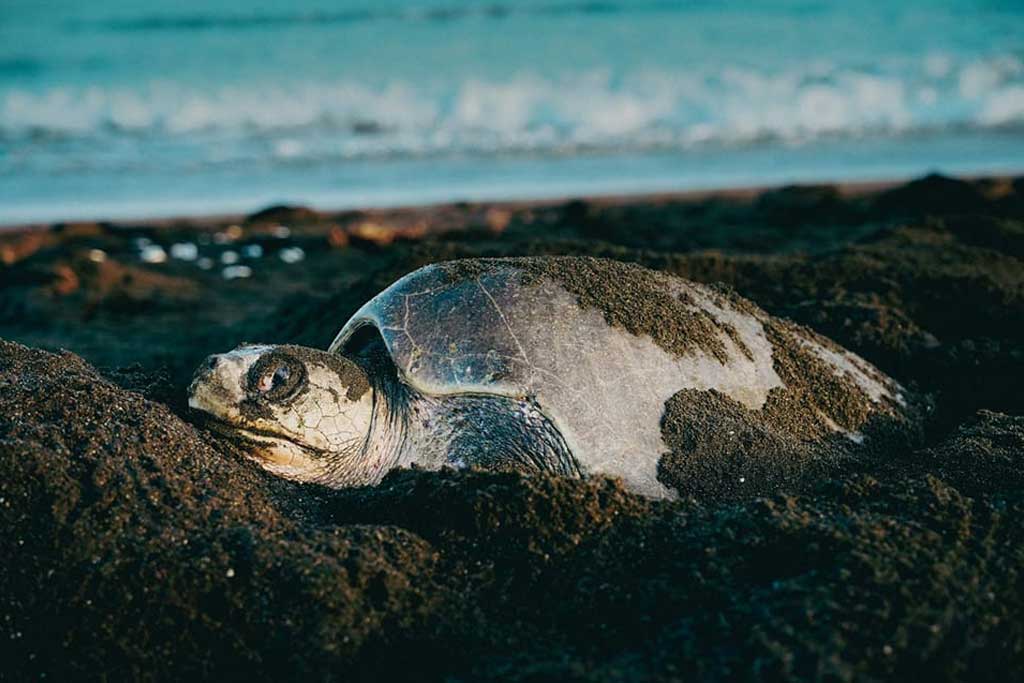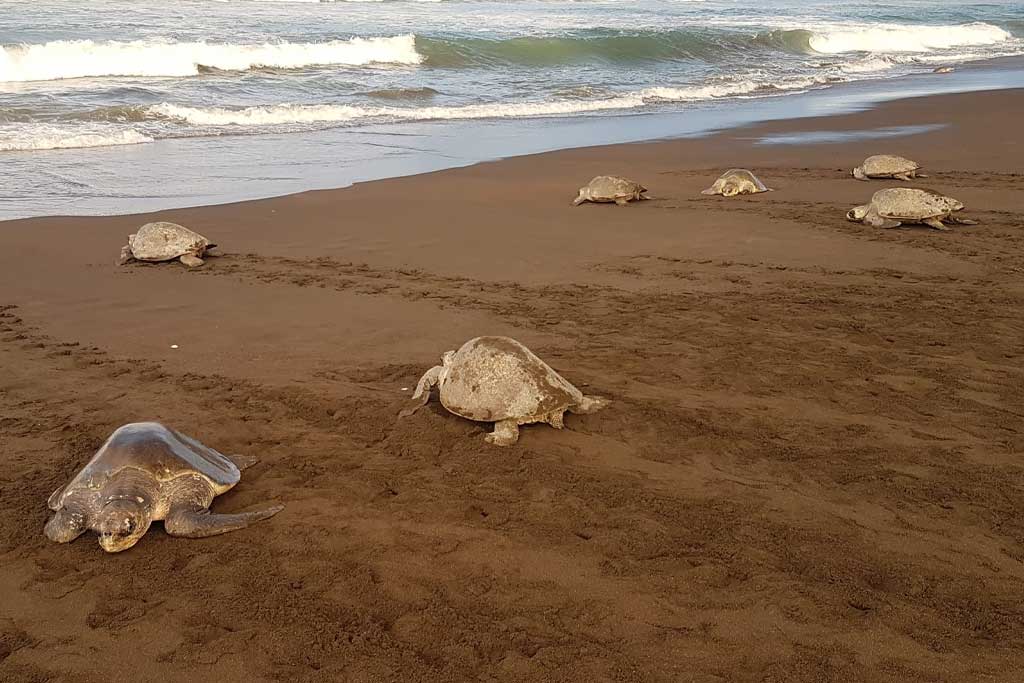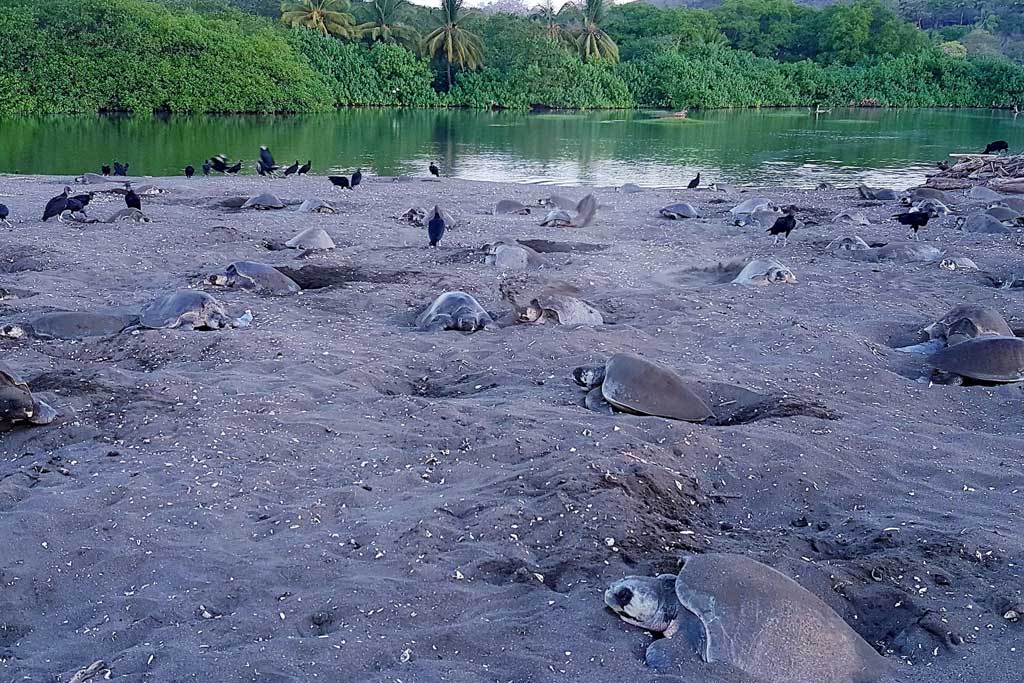Nestled in the heart of Central America, Costa Rica is a country renowned for its spectacular wildlife, picturesque beaches, and lush rainforests. Among there wonders you’ll find the sea turtles. These graceful giants of the ocean are not only an integral part of the country’s diverse ecosystem, but they also draw in crowds of visitors eager to witness their incredible nesting and hatching rituals. In this article, we’ll take a closer look at the world of sea turtles in Costa Rica, exploring their various species, nesting, and hatching phenomena, the best places to witness these events, the threats they face, and the efforts being made to conserve them. We’ll also delve into the importance of responsible and sustainable turtle watching practices, ensuring that these magnificent creatures continue to thrive for generations to come.
Costa Rica’s Sea Turtle Species: A Closer Look at the Country’s Diverse Turtle Population
Costa Rica boasts an impressive array of sea turtle species, with four of the world’s seven species calling its waters home: the green sea turtle, the olive ridley sea turtle, the hawksbill sea turtle, and the leatherback sea turtle. Each species boasts unique physical characteristics and behaviors that set them apart from one another. The green sea turtle, the largest of the hard-shelled sea turtles, can weigh up to 500 pounds and is named for the green color of its body fat. It is a herbivore that feeds on seagrass and algae. The olive ridley sea turtle, the most abundant species in Costa Rica, is renowned for its unique nesting behavior known as arribada, which involves hundreds or even thousands of turtles nesting at the same time on a single beach. Meanwhile, the hawksbill sea turtle is a smaller species, with a distinctive, pointed beak and a beautiful, patterned shell. Finally, the leatherback sea turtle is the largest of all sea turtles, with leathery skin and the ability to dive to depths of up to 4,000 feet.

The Miracle of Life: Understanding Sea Turtle Nesting and Hatching Phenomena
Sea turtles’ nesting and hatching phenomena are truly remarkable. One of the most fascinating behaviors is their natal homing, where female sea turtles return to the same beach where they were born to lay their eggs. After digging a hole in the sand, they lay anywhere from 70 to 150 eggs before covering them with sand and returning to the ocean. After approximately two months of incubation, the eggs hatch, and the baby sea turtles make their way to the ocean. This journey to the ocean is fraught with danger for the hatchlings. Predators such as birds, crabs, and even humans can prey on the vulnerable baby turtles. Unfortunately, the survival rate for sea turtle hatchlings is estimated to be around one in 1,000 to one in 1,500. Nonetheless, witnessing the hatching of sea turtles is an awe-inspiring sight and a reminder of the fragility and beauty of these creatures.
Prime Turtle Watching: Top Sea Turtle Nesting Beaches in Costa Rica
For those who are seeking to witness sea turtles nesting in their natural habitats, Costa Rica offers several beaches that are ideal for turtle watching, each with its unique charm and offerings. Tortuguero National Park and the town of Parismina on the Caribbean coast are one of the most popular destinations for turtle watching on the Atlantic Coast of Costa Rica and are home to a large population of green sea turtles and a significant nesting site for the critically endangered hawksbill sea turtle. Another prime nesting location for sea turtles in Costa Rica is the Nicoya Peninsula on the Pacific coast. Here, visitors can witness hundreds or even thousands of turtles nesting during the arribada phenomenon. The Ostional Wildlife Refuge, located in the same region, is one of the World’s most important nesting sites nesting site for olive ridley sea turtles. Playa Junquillal, is a significant nesting site for the olive ridley and the leatherback, which is the largest of all sea turtle. Finally, Playa Langosta, located near Tamarindo, is another prime nesting beach for sea turtles, with a significant population of olive ridley sea turtles. With so many beautiful and unique beaches to choose from, turtle watching is an activity that should not be missed on a trip to Costa Rica.

Threats and Conservation: The Challenges Facing Sea Turtles and Efforts to Protect Them
Despite being a crucial part of the ecosystem, sea turtles are endangered due to habitat destruction, pollution, and hunting. In the past, they were hunted for their meat, eggs, and shells, which were used in traditional medicine and decorative items. Fortunately, hunting is now illegal in Costa Rica, but there are still several significant threats to these amazing creatures. The nesting habitats of sea turtles are also under threat from human activities such as coastal development, beach erosion, and pollution. These issues can have a devastating effect on sea turtle populations, as they rely on specific beaches for nesting and may not be able to adapt quickly to changes in their habitat. However, several organizations and initiatives are dedicated to the conservation of sea turtles in Costa Rica. The establishment of protected areas and national parks, such as Tortuguero National Park and the Ostional Wildlife Refuge, is one of the most significant efforts to protect sea turtles in Costa Rica. These protected areas offer safe nesting habitats for sea turtles and help limit human activities that may harm them. Moreover, several conservation organizations conduct research, monitor nesting beaches, and engage in education and outreach programs to raise awareness about the importance of sea turtles and their conservation. Explore the world of sea turtles in Costa Rica, witness their nesting habits in their natural habitats, and learn more about the ongoing efforts to protect these incredible creatures. It’s an unforgettable experience that will leave you in awe and with a deeper appreciation for the importance of conservation.

Responsible Turtle Watching: Guidelines and Tips for Ethical and Sustainable Experiences
If you’re planning a trip to Costa Rica, chances are you’ve heard about the sea turtles that inhabit the country’s beautiful coastline. As sea turtle tourism continues to grow in popularity, it is important for visitors to understand the importance of responsible and sustainable turtle watching practices.
First and foremost, it is essential to book turtle watching tours with reputable and licensed organization who prioritize the well-being of the turtles over the desires of tourists. By doing so, visitors can ensure that their turtle watching experience is responsible and sustainable.
While observing these majestic animals, it is important to never touch, chase, or disturb sea turtles in any way. These actions can cause unnecessary stress to the animals and disrupt their nesting and hatching behaviors. It’s also important to avoid using flash photography, as it can disorient hatchlings and interfere with their natural navigation to the ocean.
Visitors should also follow all regulations and guidelines established by park rangers and conservation organizations. This includes staying on designated paths and keeping a safe distance from the turtles. By respecting the natural habitat and behavior of the sea turtles, visitors can ensure that they have a positive impact on their conservation efforts.
Sea turtles are an integral part of Costa Rica’s biodiversity, and by following responsible turtle watching practices, visitors can help to protect these incredible creatures for generations to come. From their diverse species to their miraculous nesting and hatching phenomena, sea turtles are a wonder to behold. Let’s all work together to ensure that they continue to thrive in Costa Rica and beyond.
